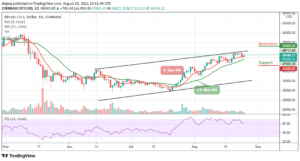
- Ripple is involved in testing the digital euro on its private ledger, which could impact XRP’s value.
- David Schwartz, Ripple’s CTO, suggests that XRP’s price on the private ledger will eventually reflect on the public ledger.
The ongoing integration of Ripple’s technology with central bank digital currencies (CBDCs) has recently drawn significant attention within the cryptocurrency community. Notably, Ripple’s close association with the testing phase of the digital euro on its private ledger has raised questions about the possibility of its effect on XRP prices.
The Digital Euro Association has partnered with Ripple to leverage its blockchain solutions and cross-border payments expertise. This partnership underscores Ripple’s commitment to advancing CBDC development in Europe. Ripple designed its private ledger to offer enhanced security and scalability, catering specifically to central banks and government entities exploring digital currencies. This private ledger is distinct from the public XRP ledger.
David Schwartz Predicts XRP Price Mirroring Between Private and Public Ledgers
A recent statement by Ripple’s Chief Technology Officer David Schwartz has fueled speculation about XRP’s future. Schwartz stated that the private ledger would mirror XRP’s pricing on the public ledger once the trial period ends. This has raised many expectations within the XRP community about how the cryptocurrency’s value will rise when Ripple’s private ledger integrates with public systems.
🚨 The digital euro is being tested on the #XRP private ledger.
David Schwartz: “The XRP price on the private ledger will be reflected on the public ledger once everything is fully tested.”https://t.co/JJKU9F0S9C pic.twitter.com/186DHwiaqB
— JackTheRippler ©️ (@RippleXrpie) September 11, 2024
The possibility of a major price increase in XRP is tied to the successful implementation of CBDCs through Ripple’s technology. The digital euro’s testing phase is a significant development as it may prove Ripple’s blockchain technology and increase institutional trust in XRP.
Ripple’s XRP Ledger demonstrated impressive performance by handling 1,500 transactions per second (TPS) in 2022. While this figure is slightly below Visa’s 1,700 TPS, it remains competitive. The ongoing digital euro tests may lead to further enhancements, positioning Ripple to better compete with digital currencies like e-CNY, which aims for a future TPS of 200,000, and Alipay, which operates at 500,000 TPS.
Ripple Designs Private Ledger for Central Bank Digital Currency Issuance
Ripple designed its private ledger for central banks and other state actors to issue their digital currencies. This platform offers the required architecture for safe yet flexible testing of CBDCs, which sets it apart from the public XRP ledger, which is openly available and not controlled by a single authority. The strategic use of XRP as a bridge asset aims to facilitate seamless interoperability between various forms of money, including fiat and digital currencies.
Several countries, including France, are exploring using XRP as a bridge currency for the digital euro. The potential adoption of Ripple’s technology by major central banks, such as the European Central Bank (ECB), could significantly bolster the credibility of Ripple’s blockchain solutions and drive increased institutional adoption of XRP.
James Wallis, Vice President of central bank engagements at Ripple, and Jonas Gross, Chairman of the DEA, have both expressed enthusiasm for the partnership. They aim to leverage their combined expertise and resources to strengthen the development of digital currencies.


















